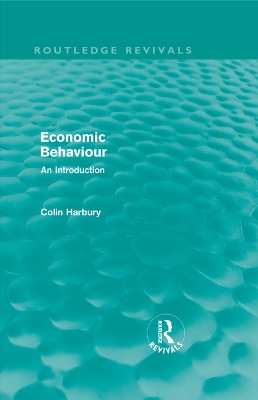Routledge Revivals
3 total works
Inheritance and Wealth Inequality in Britain
by Colin Harbury and David Hitchins
Modern Britain is characterised by marked inequalities in the distribution of wealth, which continue to fuel controversy and arouse strong, if adverse, feelings. Originally published in 1979, Inheritance and Wealth Inequality in Britain provides detailed evidence on the relative importance of inherited and self-made wealth. It is the first major work in the field since Wedgwood's pioneering study in 1929, and represents a major contribution to current debates on justice and inequality.
The study is based on more than fifteen years of detective work on successive generations of the wealthy. Professors Harbury and Hitchens have searched through the public records of registered wills, contacted relatives, executors and solicitors and have even tramped through graveyards in order to build up their picture of how wealth is actually transmitted from generation to generation. Results of this research challenge the commonly held view that inheritance is no longer a main force in the perpetuation of wealth and demonstrate unquestionably that it remains a factor of paramount importance. The book helps to answer such questions as: what proportion of wealthy men and wealthy women are self-made? Do the rich tend to marry the rich? Which industries tend to favour self-made as against inherited wealth? What are the chances today of inheriting or dissipating a fortune?
Inheritance and Wealth Inequality in Britain is essential reading for those academically and professionally concerned with policymaking on income and wealth distribution and with the tax system; and to students taking courses in welfare economics, public finance and the sociology of class. It is also an important contribution to the history of modern Britain.
First published in 1980, Economic Behaviour: An Introduction has been written specifically to speed up the settling-in process of students new to the subject of economics. It starts at the shallow end with the family budget and proceeds via an examination of business decision-taking to the analysis of supply and demand in goods and factor markets. The second half of the book deals with the major macroeconomic aggregates, national income, employment and the price level – giving both Keynesian and Monetarist approaches a fair hearing. The book ends with two chapters on economic policy and concludes with a chapter on methods of building and testing economic models – a subject which is both interesting and useful by the time students have grasped the essence of economic analysis.
Throughout, the author makes economics relevant and at the same time presents basic theoretical techniques of analysis and controversies in a manner which makes translation to one of the major standard theory texts as smooth as possible.


